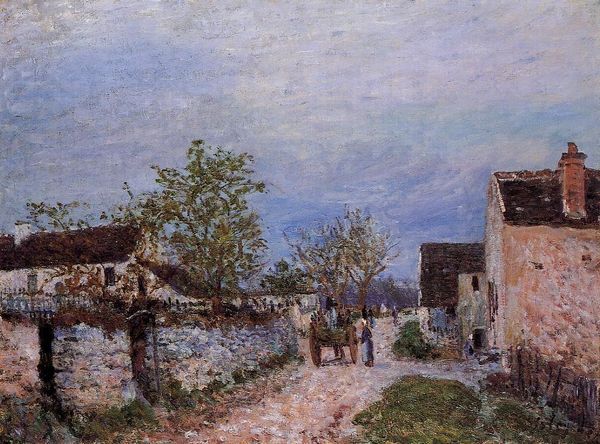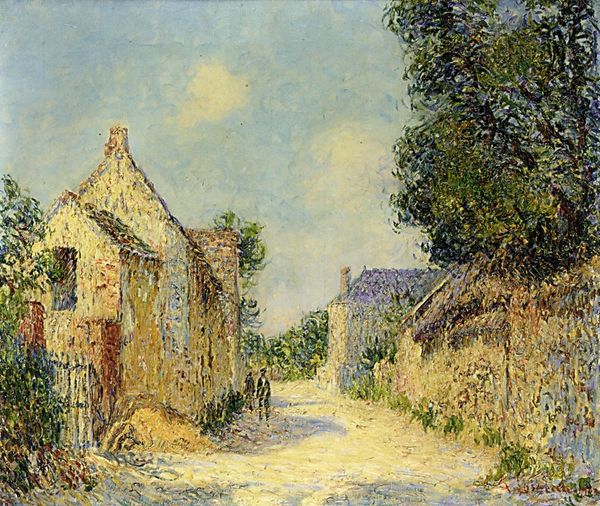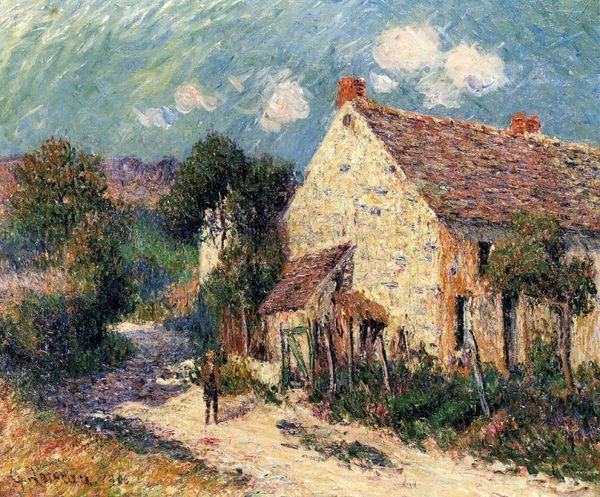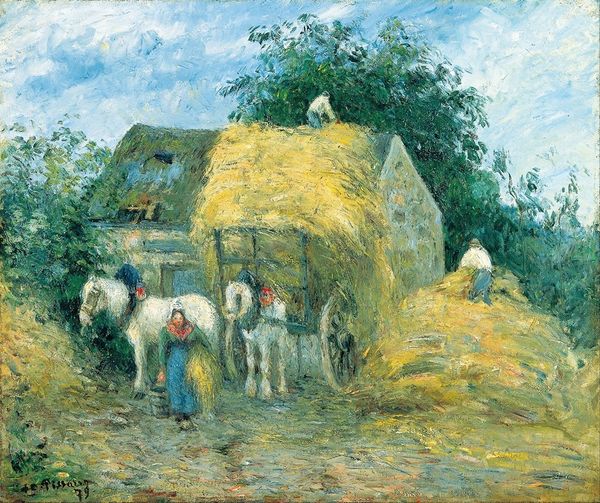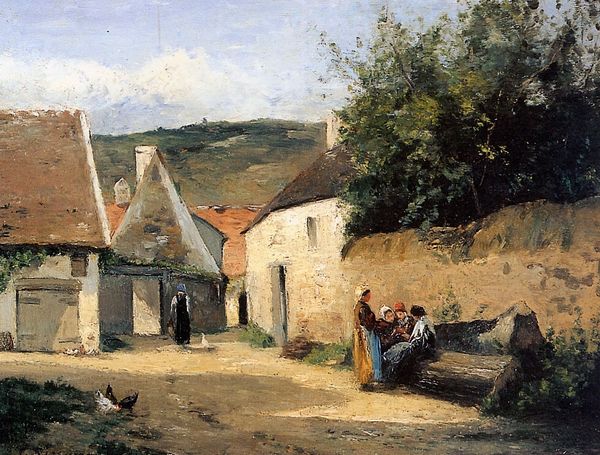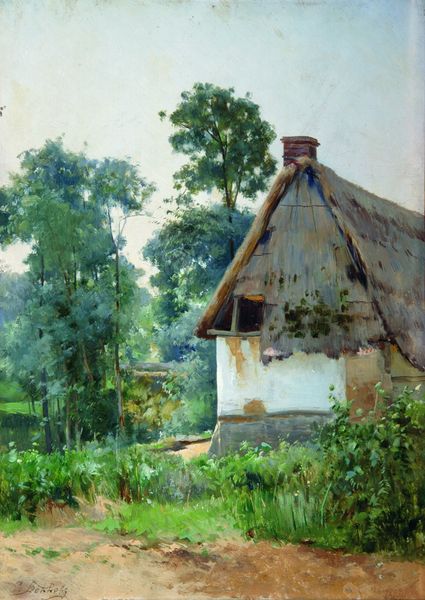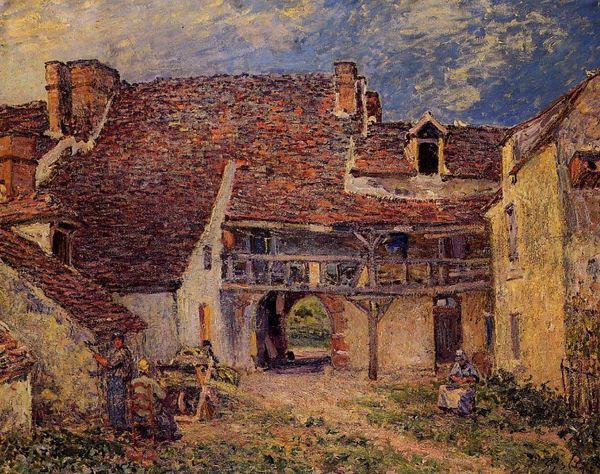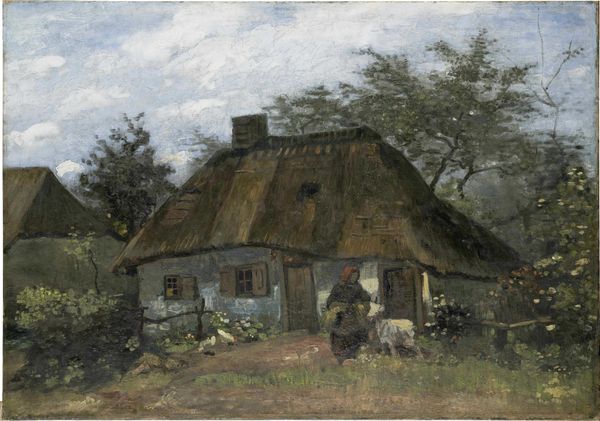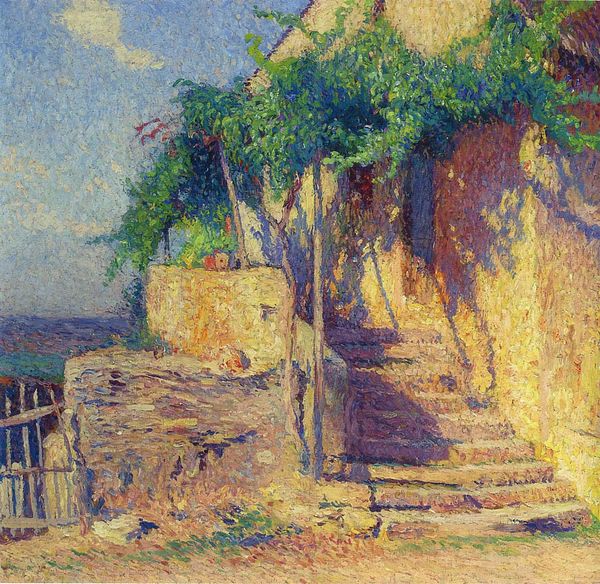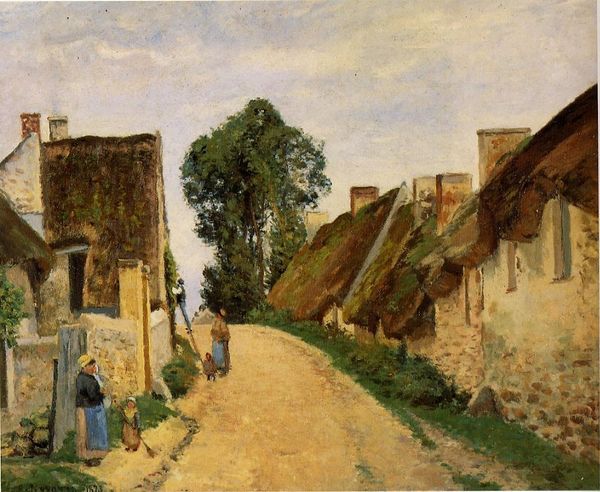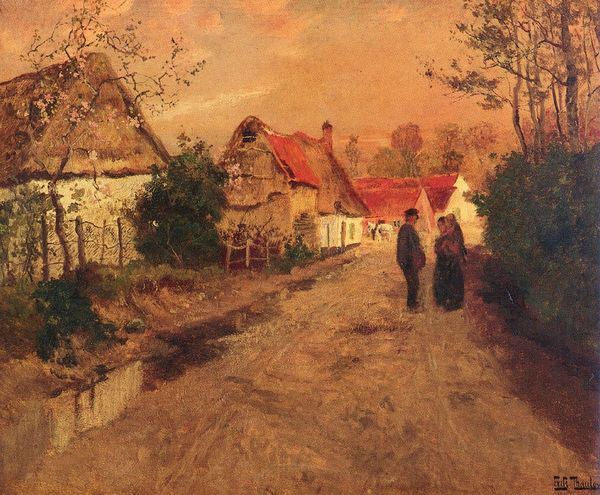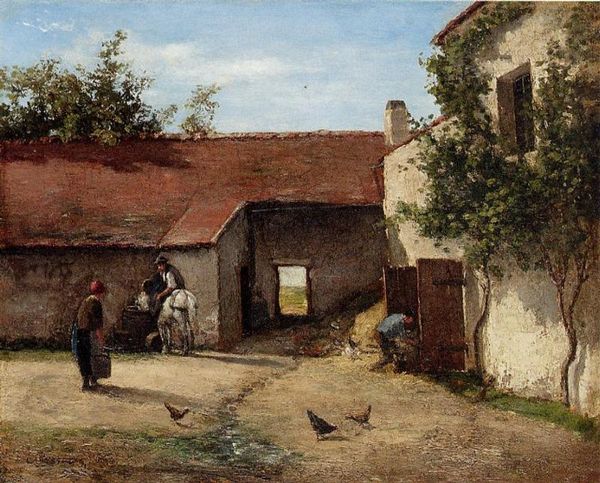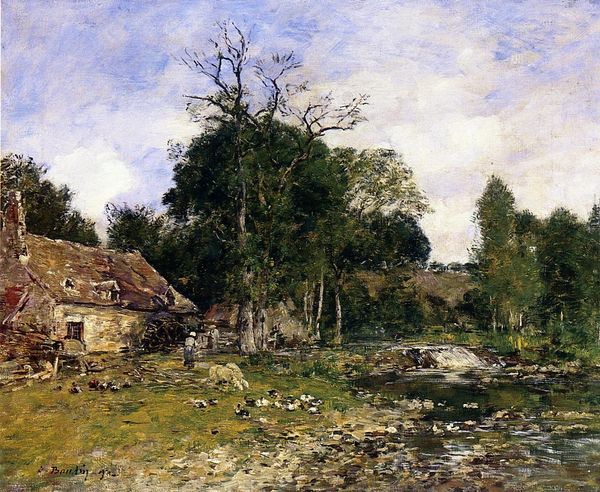
painting, plein-air, oil-paint
#
rural-area
#
painting
#
impressionism
#
impressionist painting style
#
plein-air
#
oil-paint
#
landscape
#
house
#
impressionist landscape
#
oil painting
#
france
#
cityscape
#
genre-painting
Dimensions: 60 x 73 cm
Copyright: Public domain
Curator: This is Camille Pissarro’s “A Street in Auvers (Thatched Cottage and Cow),” painted in 1880. Editor: It feels utterly peaceful. The way the light dapples the buildings creates a soothing, almost hazy effect. Curator: Indeed. Pissarro, a key figure in the Impressionist movement, often focused on scenes of rural and suburban life. He was deeply interested in depicting the lives of ordinary people and their connection to the land. This particular work comes from a time when Pissarro was exploring plein-air painting. Editor: The thatched roofs immediately signal a link to traditional rural life. In iconography, thatched roofs are often symbols of rustic simplicity and a humble existence closely tied to nature. They evoke a sense of timelessness, connecting viewers to an agricultural past. It seems also to be evoking the tradition of peasantry labor and living as being good. Curator: Yes, there's a romanticizing element here. But it's also important to remember that Pissarro had socialist leanings. He often highlighted the dignity of labor, although perhaps sometimes idealistically. Consider the positioning of the figures - they’re part of the landscape, almost integrated into the architectural and organic elements around them, don’t you think? Editor: Absolutely. There's a clear intentionality in how Pissarro integrates people and animals seamlessly into the village setting. The cow becomes a symbol of pastoral life and an ancient form of wealth. It also invites us to reflect on the historical reliance on agriculture that formed society as we know it, a sort of golden era to come back to. Curator: Perhaps. I read the cow in relationship with the other humans represented. How the weight of the human burden can compare and sometimes be even lower or reduced to that of a cattle. In this image I read it both ways in reality. This could be due to my critical analysis, for many women find the weight of cattle equal to a sort of freedom they had as a peasantry class. This is what this landscape gives me. Editor: A very complex reading. It seems Pissarro managed to imbue a simple pastoral scene with layers of symbolic and political complexity. Curator: Absolutely. He was attuned to the world around him. A landscape is never “just” a landscape, and Pissarro knew this. Editor: Very well. This quick tour was definitely evocative. Thank you.
Comments
No comments
Be the first to comment and join the conversation on the ultimate creative platform.
